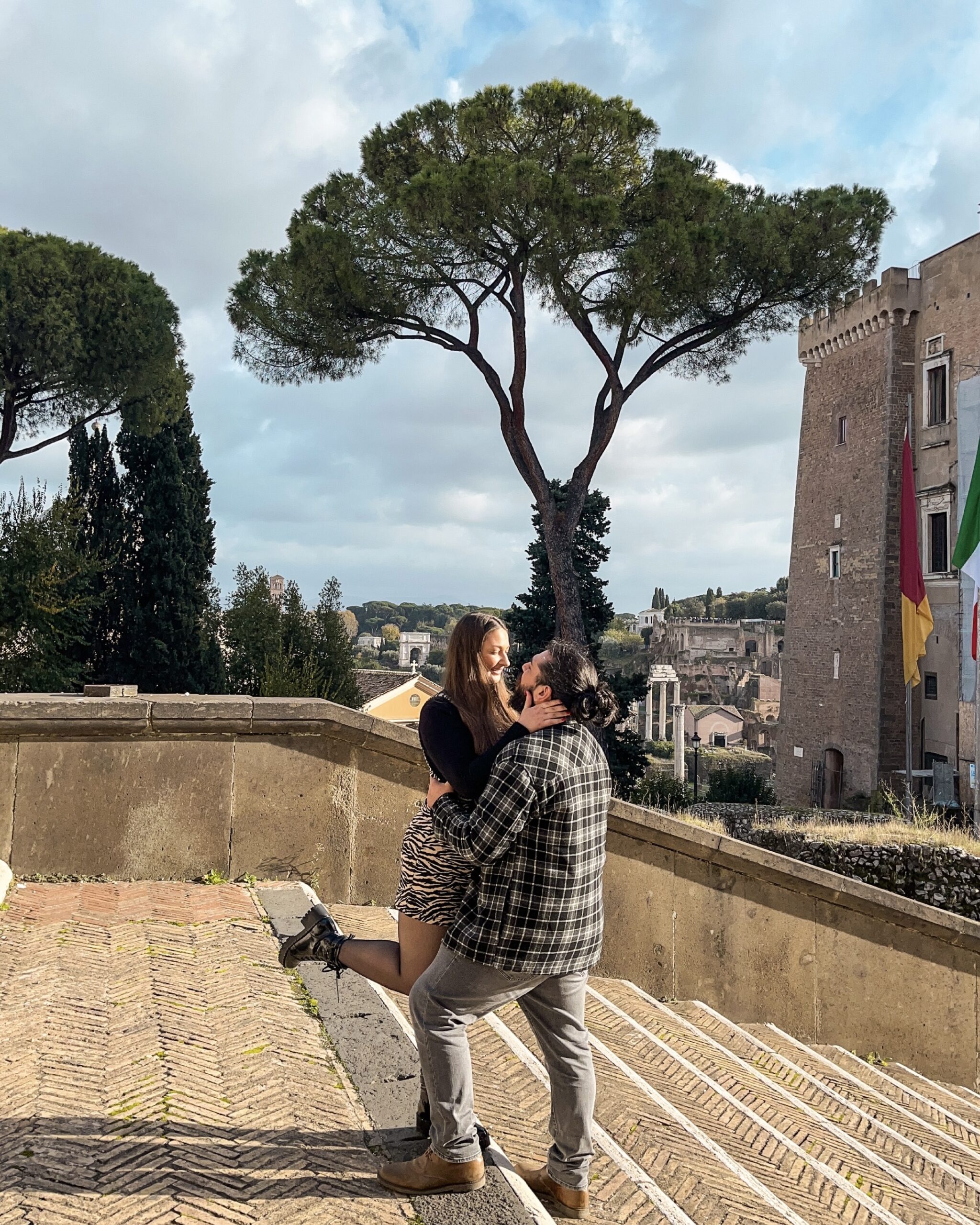
Rome has always been at the top spots on the list of the most visited countries in Europe. Known as the Eternal city, it is also home to some of the world’s most well-known sightseeing and piazzas. But who can forget about Pizza, pasta and gelato? Take a look at our 2-day itinerary to inspire you and help you organize your trip!
Day 1
Santa Maria Maggiore
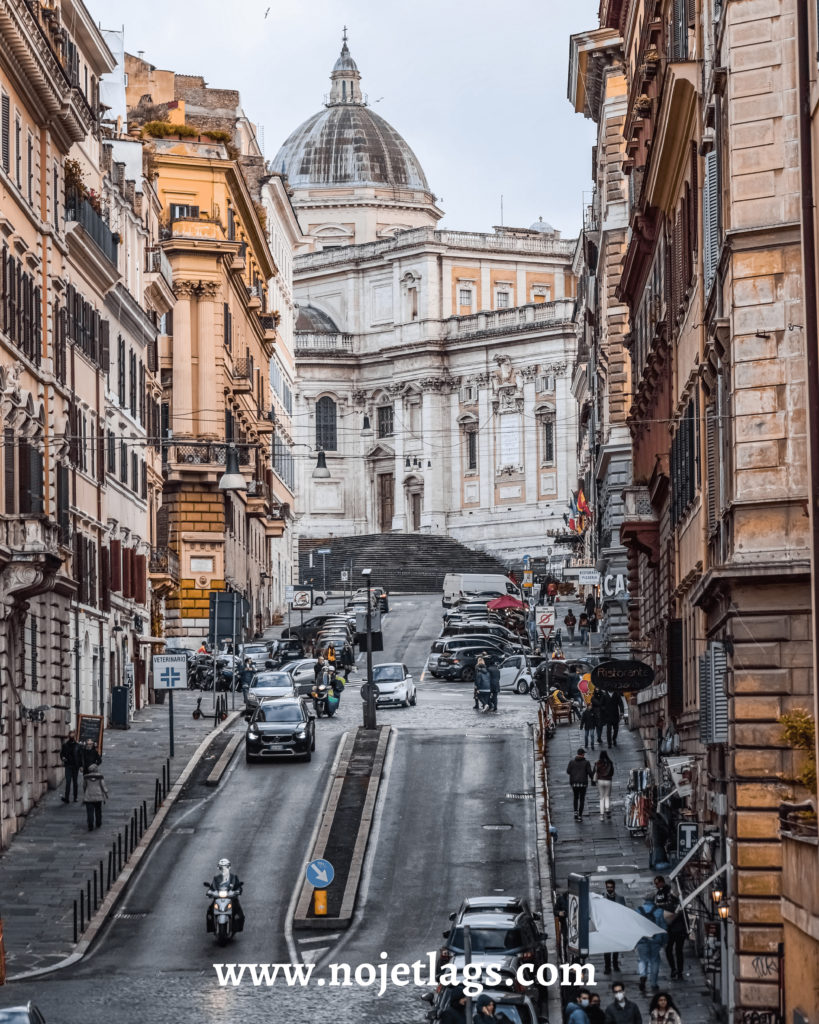
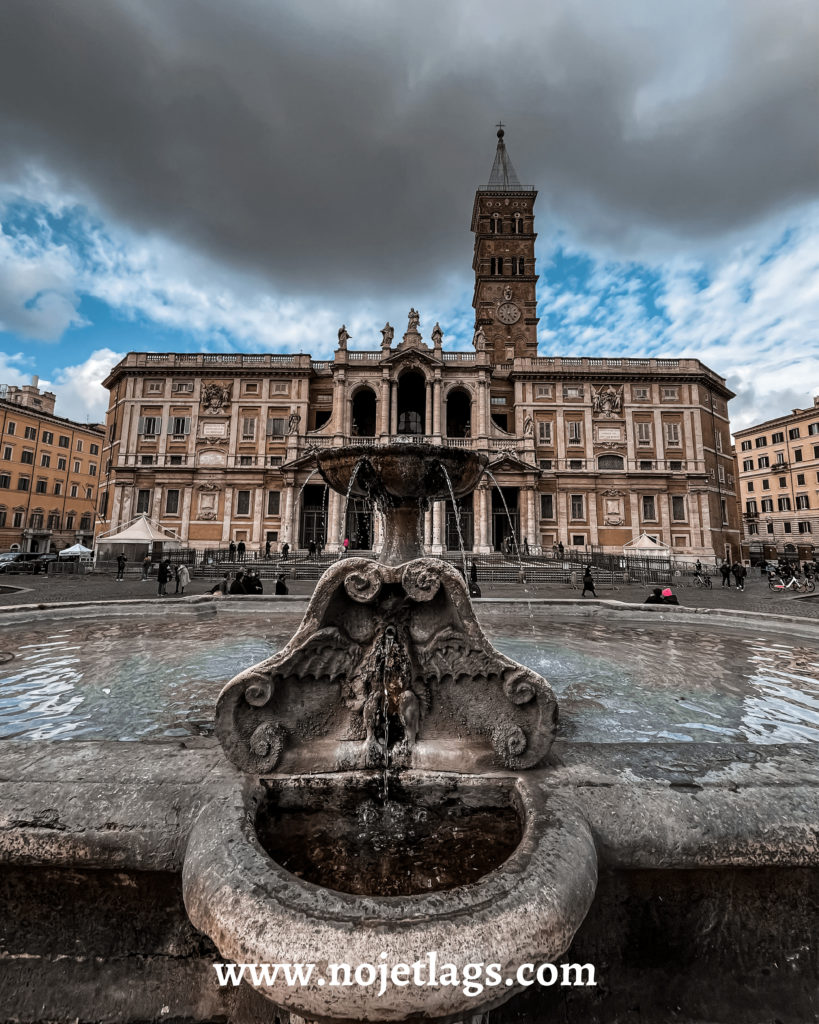
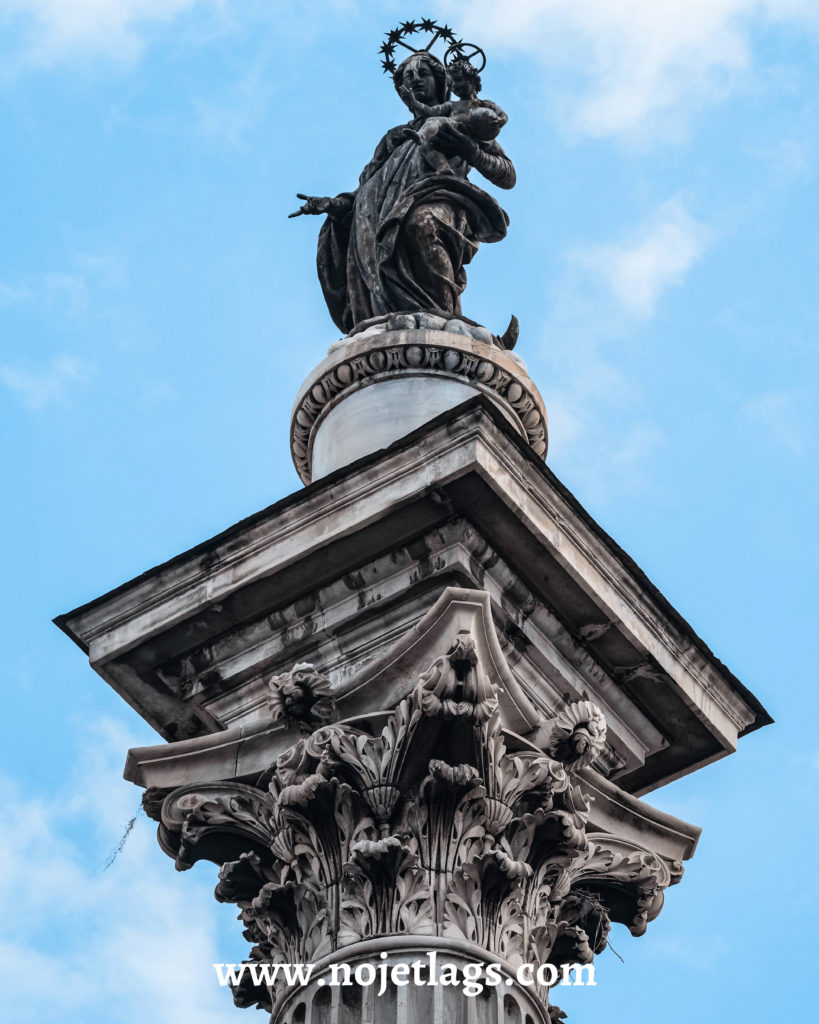

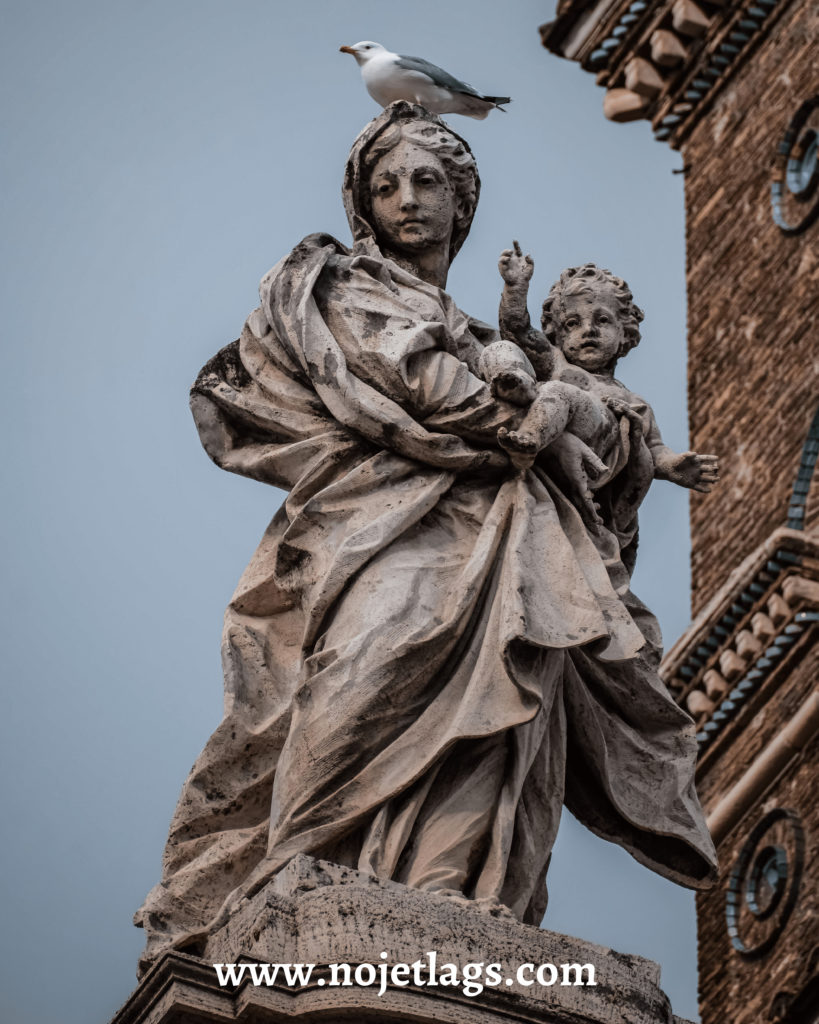
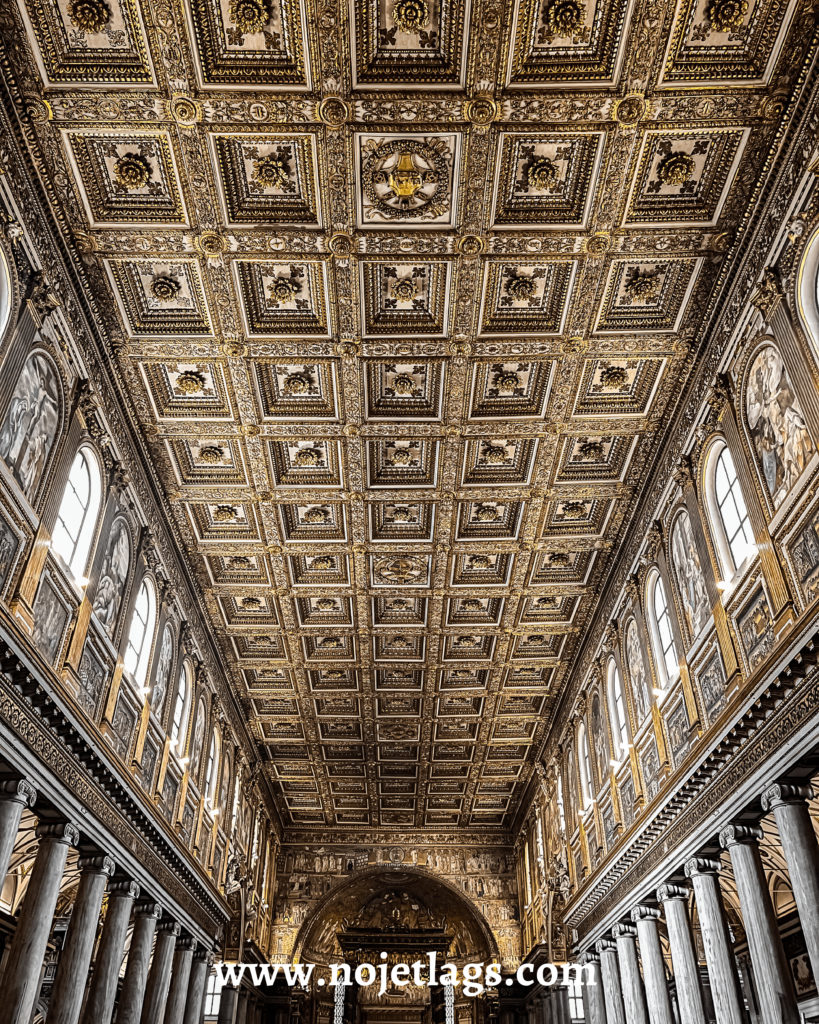
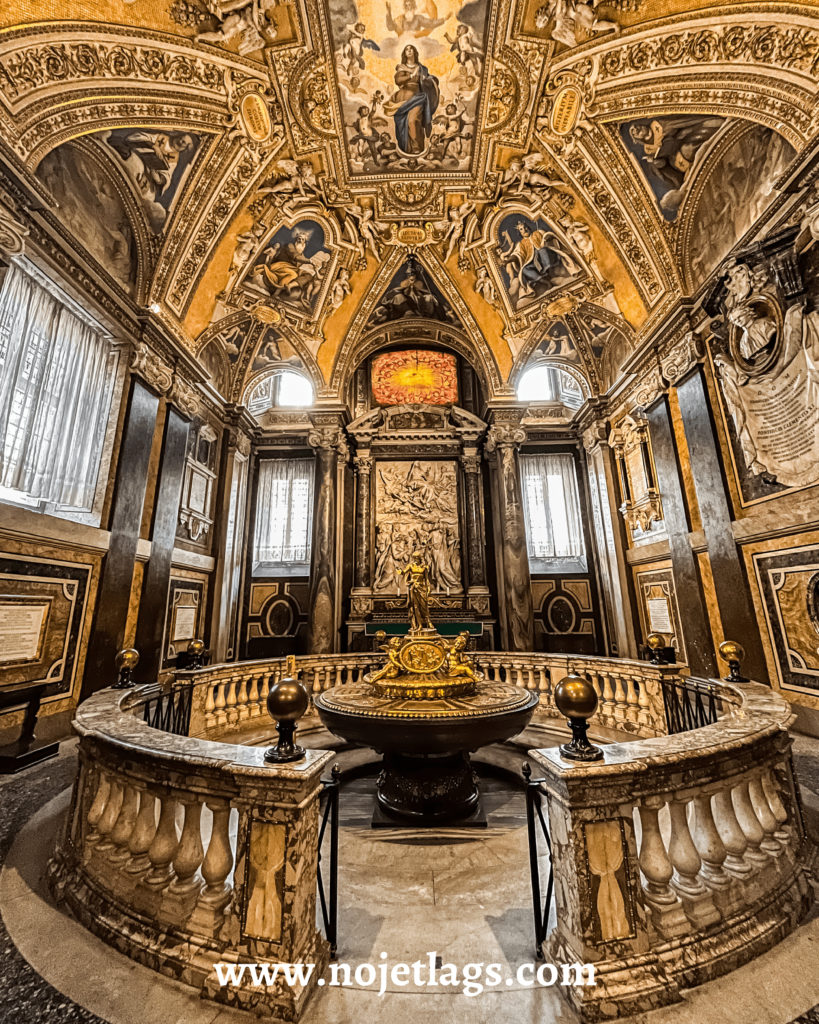
It is one of the four Papal Basilicas and the largest Catholic Marian Church in Rome. Among the Patriarchal Basilicas, it is the only one to have kept its original paleo-Christian structure, though it has been enhanced over the years. The interior features a vast number of treasures including fifth century mosaics of the central nave, the triumphal arch dating back to the pontificate of Pope Sixtus III and the apsidal mosaic. Moreover, the mosaics found in Santa Maria Maggiore are some of the oldest representations of the Virgin Mary. The Piazza on which the Church lies is also very picturesque with a colossal fluted Corinthian column of marble and the Fountain of Santa Maria Maggiore.
Piazza Venezia – Monumento a Vittorio Emanuele II



Its name comes from Palazzo Venezia, and it is located at the heart of Rome where Via del Corso, Via del Plebiscito, Via di Teatre Marcello and Via dei Fori Imperiali meet. At this square also lies the famous colossal white marble monument called Vittoriano, built to honor Victor Emmanuel II. The structure itself is also an accessible museum and its terraces offer a beautiful view as well. Moreover, it is a national symbol of Italy and every year it hosts important national celebrations.
The full ticket for the Panoramic Terrace of the Vittoriano is 12€ and allows entry to the Museum of the Risorgimento and the Museum of Palazzo Venezia.
Regarding the opening hours; it opens daily from 9:30 am to 7:30 pm with the last entry at 6:00 pm and it remains closed on January 1st and December 25th .
Santa Maria di Loreto al Foro Traiano & Santissimo Nome Di Maria Al Foro Traiano
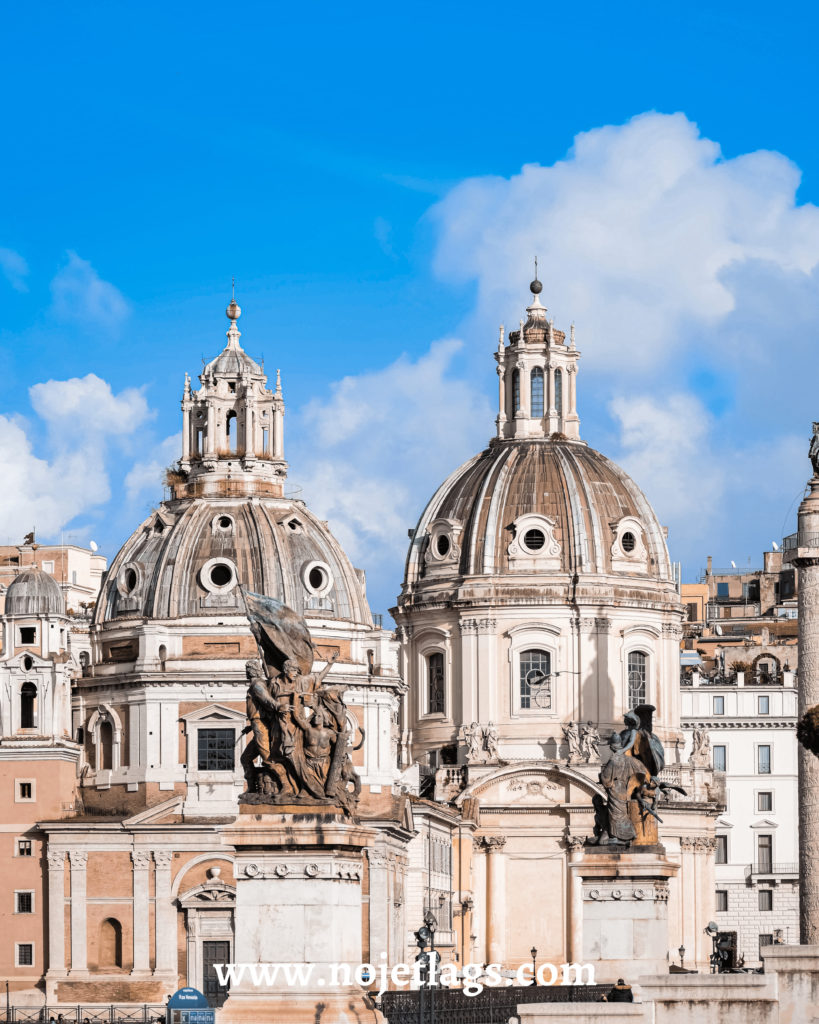
Santa Maria Di Loreto Al Foro Traiano was built at the 16th century and is the smaller of the two landmark domed churches to the north-west of the Fori Imperiali. The dome is crowned by an unusually complex lantern, known as the “cricket’s cage”, designed by Giacomo del Duca.
On the other hand, Santissimo Nome Di Maria Al Foro Traiano is an 18th century confraternity and titular church. The interior of the Church of the Most Holy Name of Mary at the Trajan Forum is elliptical (though is difficult to notice) and there are seven small chapels, decorated in polychrome marble too.
Campidoglio – Piazza del Campidoglio



It is the most important of the seven hills in Rome. Michelangelo himself designed the square. Nevertheless, the execution lasted very long that Michelangelo didn’t live to see his work completed. An imposing bronze equestrian statue of Marcus Aurelius was erected in the center of the square; however, it is currently housed in the Palazzo dei Conservatori and in the square stands a replica of the Roman Emperor instead. Moreover, Capitoline Museums and the legendary sculpture of the Capitoline Wolf, situated between the Palazzo Senatorio and Palazzo Nuovo can be found at the square, attracting millions of tourists every year.
The full ticket costs 20€ and Children under 6 have free access. Moreover, disabled People and one accompanying person enter free and do not need any reservation.
It opens every day from 9:30 am to 7:30pm. On the 24th and 31st of December at 9:30 am to 2:00 pm and the ticket office closes one hour before.
It is closed on the 1st of January, the 1st of May and on Christmas.
Arco di Tito


The Arch of Titus was erected by Domitian at the Palatine hill on the Via Sacra in the Forum Romanum to commemorate the victories of his father Vespasian and brother Titus in the Jewish War in Judaea. In the 19th century there was a restoration of the monument using Travertine limestone. More specifically, the whole arch was dismantled and reassembled piece by piece.
Palatine Hill



The Palatine Hill is considered to be the birthplace of the Italian capital and is believed to have been inhabited since the year 1000 B.C. In the Hill you can see hundreds of ruins of the buildings that were created for high Roman society in ancient times. Some other interesting sights are the House of Augustus, the Farnese Gardens, the Hippodrome of Domitian and the Palatine museum.
Circo Massimo Farmer’s Market


Walking past the Palatine Hill and exploring the nearby area, we came across a local farmer’s market, called the Circo Massimo Farmer’s Market, so we decided to take a look at some local and traditional products. There were many counters selling fresh meat, fish, cheese, cold cuts as well as flowers. Something that we didn’t expect to come across was a backyard full of little canteens cooking and selling some of the local products. The atmosphere was nice and everyone was really kind and helpful. There was also live music playing. As for the food we opted for some bruschettas, a plate of meat including sausage, pancetta and the most delicious pieces of lamb in a stick. Everything was so good and we had so much fun. Definitely recommend paying a visit to this market!
The farmer lies at Via di San Teodoro, 74, Rome, Italy and it opens on Saturdays and Sundays from 8am to 3pm.
Arco di Constantino




The arch was erected to celebrate Constantine’s victory over Maxentius. It incorporates sculptures from many earlier buildings, including part of a battle frieze and figures of prisoners from the Forum of Trajan, a series of Hadrianic roundels, and a set of eight Aurelian panels. It stands approximately 20 meters high, 25 meters wide, and 7 meters deep. There are three portals each flanked by partially engaged Corinthian columns.
Colosseum


Rome’s most famous sightseeing also called the Flavian Amphitheatre was built under the Flavian emperors between 70 and 72 CE. The amphitheater seated 50,000 spectators who used to enjoy hand-to-hand combats between gladiators, contests between men and animals, and of many larger combats, including mock naval engagements. The Colosseum remained active for over 500 years, more specifically, the last recorded games in history were celebrated in the 6th century.
In the medieval times, the Colosseum was also used as a church, then a fortress by two prominent Roman families, the Frangipane and the Annibaldi. The Colosseum was also damaged by lightning and earthquakes and, even more severely, by vandalism and pollution.
The Colosseum is open every day from 8:30am until 7 pm and closed on the 25th of December and 1st of January.
Regarding the prices; combined ticket to visit the Colosseum, the Roman Forum and the Palatine cost 12€ for adults, 7.50€ for European Union members ages 18 – 24. For children (ages less than 17) and seniors (over 65) members of the EU the entrance is free.
Dinner at Seu Pizza Illuminati





Seu Pizza illuminati is a restaurant by the multi awarded Chef Pier Daniele Seu located at Via Angelo Bargoni, 10 – 18, Rome, at Trastevere.
Other than its beautiful and modern interior design and its extremely kind and helpful staff the food speaks from itself. The menu features the traditional recipes as well as unique gourmet pizzas that definitely deserve a taste, all made with exceptional traditional fresh products.
For starters we opted for the ”Porcini mushroom suppli and the lasagna”. Both were excellent and really made us keen to try more. As for the pizzas we tried the ‘’Malena” containing a very unique onion marmalade, broccoli, mozzarella & taleggio cheese and the ‘’ Piglet in the wood’’ with smoked provola cheese, spreadable soft sausage and hazelnuts. Of course, we couldn’t not try the famous ‘’Banoffee pie pizza and the grandma cake”.
If you ever find yourself at the beautiful Trastevere, definitely pay a visit at Seu Pizza Illuminati. (The restaurant opens at 7pm and you surely need to make a reservation some days before).
For more information click here.
Day 2
Villa Borghese



It is one of the most beautiful parks in Rome and it is located on the Pincian Hill only a few minutes from the Spanish Steps and Piazza del Popolo following a very scenic route by foot. The park features lakes, graphic buildings as well as amazing views to some of Rome’s most famous churches and sightseeing. You can also rent bicycles, scooters or even vehicles to explore the numerous roads of the park.
The entrance to the park is free of charge and the park is open every day from dawn to dusk.
Piazza di Spagna


This square is definitely one of Rome’s most famous meeting points. At the square lies the Fontana della Barcaccia (The fountain of the longboat) at the base facing at the imposing Spanish Steps which lead to the Trinità dei Monti church. The monumental stairway consists of 135 steps and three different terraces. The top of the stairs offers indeed an amazing panoramic view. Walking past the square you come across a busy road with many stores and coffee shops, including the Museo Canova Tadolini which impresses you with its vast collection of sculptures before even entering. We surely recommend grabbing a quick espresso and admiring some of the great works of Antonio Canova, and his student Adamo Tadolini.
Also Read Our Budapest And Vienna Guides!
Piazza del Popolo





An Egyptian obelisk of Sety I from Heliopolis stands in the center of the Piazza, being the second oldest and one of the tallest obelisks in Rome. Furthermore, the twin churches of Santa Maria dei Miracoli and Santa Maria in Montesanto are a major part of the square. On the north of the piazza stands the Porta del Popolo. Last but not least, the Fontana del Nettuno, the Fontana dell’Obelisco and the fountain of the goddess Roma can be found on the square.
Palazzo di Giustizia



It is the seat of the Supreme Court of Cassation and the Judicial Public Library and it is located at the Prati district. It is inspired by late Renaissance and Baroque architecture; the building is 170 meters by 155 in size and is completely covered with Travertine limestone.
Castel Sant’ Angelo


It was built in the 2nd century as a mausoleum by order of emperor Hadrian. Later the mausoleum was converted to a castle in the year 280 when the Aurelian walls were built around it. Lastly, in the 5th century it was converted into a fortress. More specifically, it is located on the right bank of the Tiber, and it guards the Ponte Sant’Angelo, one of the principal ancient Roman bridges.
The ticket costs 17.50 € for adults and 6€ for children aged up to 17 years and it is open from 9:00 am to 7:30 pm.
Ponte Sant’ Angelo



It consists of seven stone arches and five main spans. In the 13th century Pope Clement IV installed an iron balustrade.
Moreover, in the 16th century Pope Clement VII placed statues of Saints Peter and Paul at the end of the bridge. In 1688, 10 statues of angels, designed by Gian Lorenzo Bernini, were mounted on the parapets. This bridge offers amazing views to the Castel Sant’s Angelo as well as to the Tiber.
Basilica S. Pietro

St. Peter’s Basilica is one of the four Major Basilicas of Rome and it fits up to 60,000 people. It is open daily and it holds many remarkable works of art. For instance, the Michelangelo’s “Pieta“, located to the right of the entrance in the Basilica.
The entry to St. Peter’s Basilica is free, but there are long queues building up with the waiting hour being up to 2 hours. However, skip-the-line tickets with an audio guide are available costing 19.5€. There is also the option to visit the dome in the Basilica using stairs or a lift. This option costs 8 euros, arranged on site or with a guided tour).
Regarding the Opening Hours: From April to September 7:00 am – 7:00 pm and from October to March 7:00 am – 6:30 pm
Because of the papal audience, the Basilica usually opens around 1 pm on Wednesdays. It remains closed on January 1st and 6th, on Easter and during special occasions.
Piazza Navona


At this square lie many important sculptures; Some of them being the Fontana dei Quattro Fiumi topped by the Obelisk of Domitian, the church of Sant’Agnese in Agone and the Pamphili palace. There can also be found two other fountains; the Fontana del Moro and the Fountain of Neptune.
Pantheon


The Pantheon is a former Roman temple which was turned to a Catholic church (Basilica di Santa Maria ad Martyres) since the 7th century, and it is the best preserved ancient building in Rome. The very interesting fact about the pantheon is its unique Roman architecture. More specifically, the building is cylindrical with a portico of large granite Corinthian columns. Its unique dome remains the single largest, unreinforced concrete dome in the entire world, and it is about 142 feet in diameter. Furthermore, the famous Renaissance painter, Raphael, is buried inside with his fiancée, Maria Bibbiena right next to him.
Fontana Di Trevi

It is definitely Rome’s and one of the world’s most well-known sightseeing. It stands 26.3 meters high and 49.15 meters wide and it is the largest Baroque fountain in the city. Rumor has it that if you throw a coin using your right hand over your left shoulder you will find love or romance while in Rome. Another well-known reason for the coin tossing is based on local lore that states doing so will bring you back to Rome again, someday. It is estimated that 3,000 euros are tossed at the fountain everyday. Insane right?
Also Read Our Budapest And Vienna Guides!
Some useful Tips

Currency
The currency in Rome is the Euro.

Airport Transfer
Whether your flight departs from the Fiumicino Airport or the Ciampino Airport there are many ways to approach them.
Regarding the Fiumicino Airport, which is the biggest one and the one with the most flights:
The Leonardo Express is a Trenitalia train connecting Fiumicino airport with the main train station in Rome, the Termini. It takes roughly 32 minutes and leaves the airport every half-hour, or every 15 minutes during peak hours. It’s a non-stop service from the airport to the Termini. The first train leaves the airport at 6:38 a.m., and the last one at 11:38 p.m.. Tickets cost €14 each way.
There is another train option, the regional train called the FL1. It’s a commuter line, and connects Fiumicino Airport with several points in central Rome. However, it does not go to the Termini station. You can get off at Trastevere, Ostiense, Tuscolana, or Tiburtina stations in Rome. The cost of a ticket on the FL1 is only €8. Trains leave every 15 minutes or so, and the trip takes about 30 minutes.
There are also many bus choices that usually connect the Fiumicino Airport with the Termini Station.
The SIT bus shuttle is one of the least expensive and most convenient ways.
However, the Terravision bus is also a good choice. On both of those choices you can book your tickets in advance at a lower price starting from 6€
You can also take a taxi. The one-way rate for a Rome taxi between Fiumicino airport and anyplace in Rome inside the Aurelian walls, is 48€.

Transportation
The public transport system in Rome is very varied, cheap and user friendly. The main means of transportation in the city are:
The Metro: there are three lines, and it is the smallest metro system in Europe. However, it reaches the city’s most important landmarks.
Buses: There are over 350 bus lines. Some of them are urban lines (starting between 5 am and 6:30 am and finish at midnight), Night lines (operating between midnight and 5 – 6 am), Express lines (for the outskirts of Rome, for longer journeys and Exact lines (they link the center with the surrounding neighborhoods).
You can purchase Bus tickets at any metro station, news-stand or convenience stores. If you are planning on using the bus regularly, we recommend you buy a few tickets at a time or get a travel card, which might be a better option.
You can purchase an one-day pass for unlimited travel for 6€ or you can get a three-day pass for 16.5€ or an one-week pass which costs 24€ if you plan to stay longer and use the public transportation a lot.
Tram:
(from 5:30 am until midnight every day).
Line 2: Piazza Mancini – Piazzale Flaminio, Line 3: Piazza Thorwaldsen – Trastevere, Line 5: Giovanni Amendola – Piazza dei Gerani, Line 8: Torre Argentina – Trastevere, Line 14: Giovanni Amendola – Palmiro Togliatti and Line 19: Piazza Risorgimento – Piazza dei Gerani.

Budget
The average hotel price in Rome for a couple is 134€.
The average cost of food in Rome is circa 40€ per day including breakfast, lunch or dinner, coffee etch. always depending on the traveler’s choices. Dining out in Rome usually costs around €15 per person.
Also note that the tap water in Rome is drinkable, that can save you some money.
If you plan to visit a lot of museums, you should consider purchasing a tourist card that can save you a lot of money. Some examples are the Roma Pass, the Archeologia card, or the Biglietto 4 Musei (Four Museum Combination Ticket).

Safety
In Rome petty theft is very common. So you should always keep your valuables secure and out of sight. Pickpockets also steal around Rome’s main attractions.
Moreover, you should never buy tickets from unofficial ticket offices. Moreover, if someone ever approaches you to sell you skip-the-line tickets, ignore them. Also, always make sure your taxi driver is using the meter.
If you ever find yourself in an emergency, call 113 for assistance.
